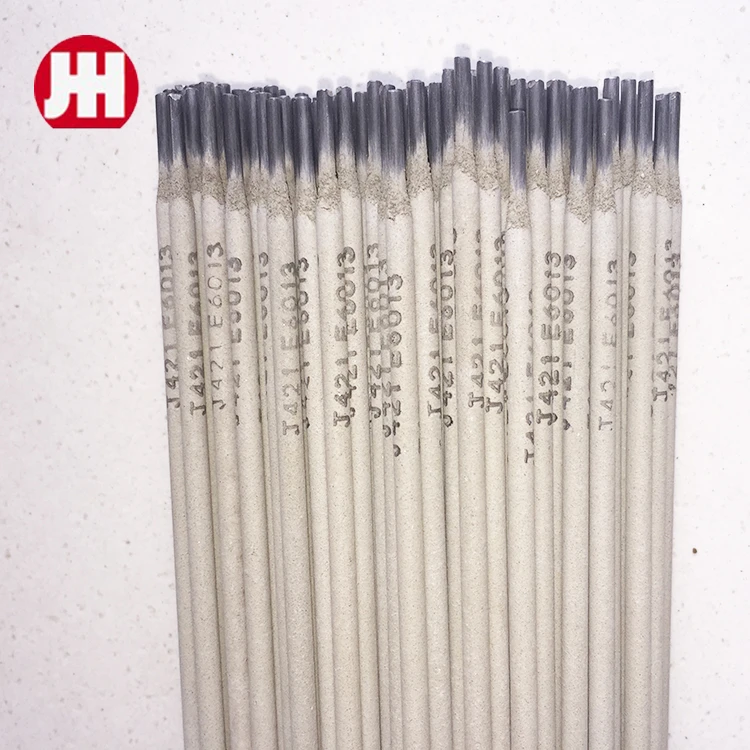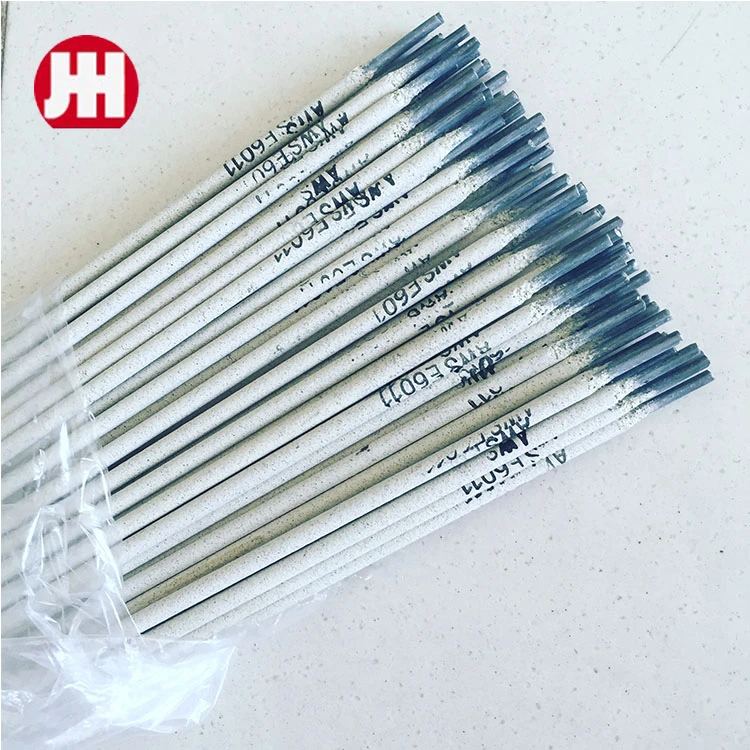ELETRODOS DE SOLDA
Welding electrodes offer numerous advantages, especially when purchased as bulk welding rods. By buying in bulk, you can significantly reduce the welding rod cost, making it a cost-effective solution for large-scale projects. High-quality welding electrodes ensure strong, reliable welds, enhancing the durability and integrity of your work. Additionally, having a variety of welding electrodes on hand allows you to tackle different materials and welding techniques with ease, ensuring optimal results every time. Investing in bulk welding rods not only saves money but also guarantees you have the right supplies readily available for any welding task.
-
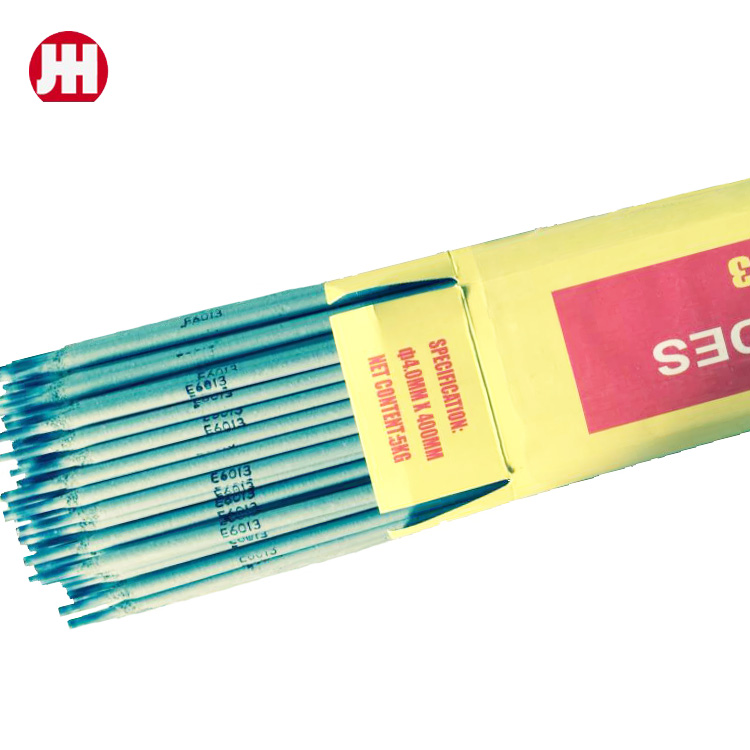 E6013 é um eletrodo de soldagem de aço carbono, é adequado para trabalhar em todas as posições com excelentes propriedades tecnológicas de soldagem, arco estável menos respingos, boa aparência moldada, fácil para remoção da camada de escória, fácil para abrir arco e reabrir arco.
E6013 é um eletrodo de soldagem de aço carbono, é adequado para trabalhar em todas as posições com excelentes propriedades tecnológicas de soldagem, arco estável menos respingos, boa aparência moldada, fácil para remoção da camada de escória, fácil para abrir arco e reabrir arco. -
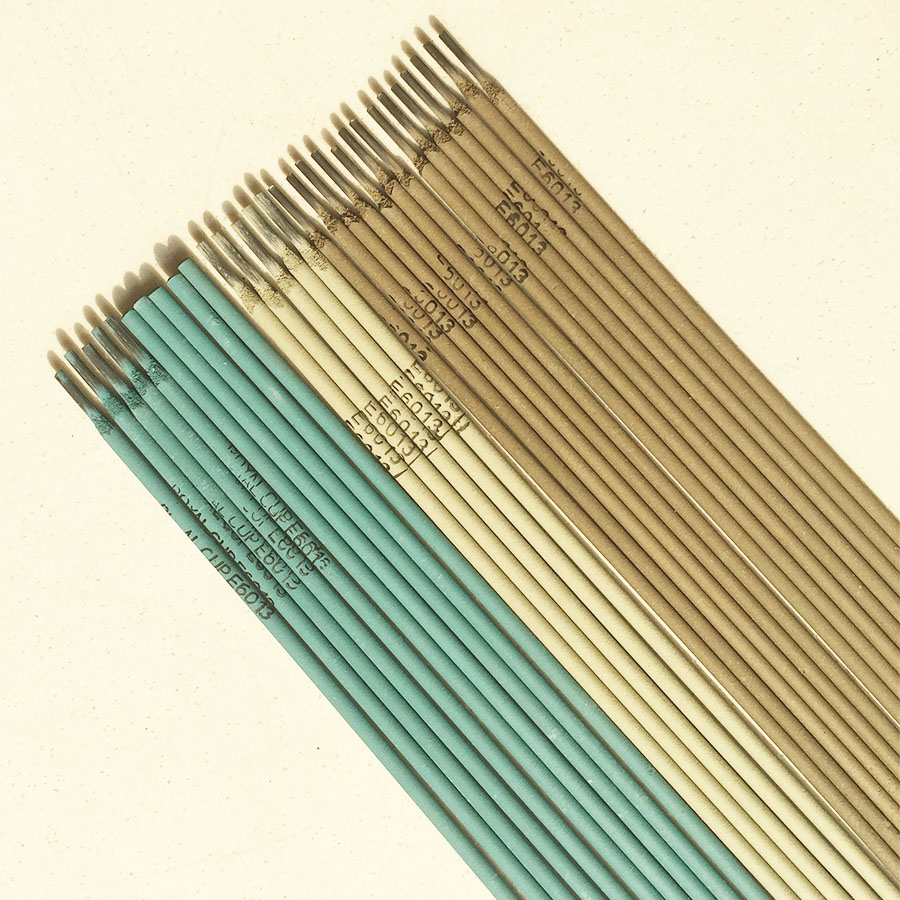 Nosso AWS E6013 é um tipo de eletrodo de soldagem de aço carbono, eletrodo 422 é um tipo de ferramenta de soldagem, que é um eletrodo ácido, revestimento de titânio tipo cálcio, e o modelo de eletrodo padrão internacional correspondente é E4303.
Nosso AWS E6013 é um tipo de eletrodo de soldagem de aço carbono, eletrodo 422 é um tipo de ferramenta de soldagem, que é um eletrodo ácido, revestimento de titânio tipo cálcio, e o modelo de eletrodo padrão internacional correspondente é E4303. -
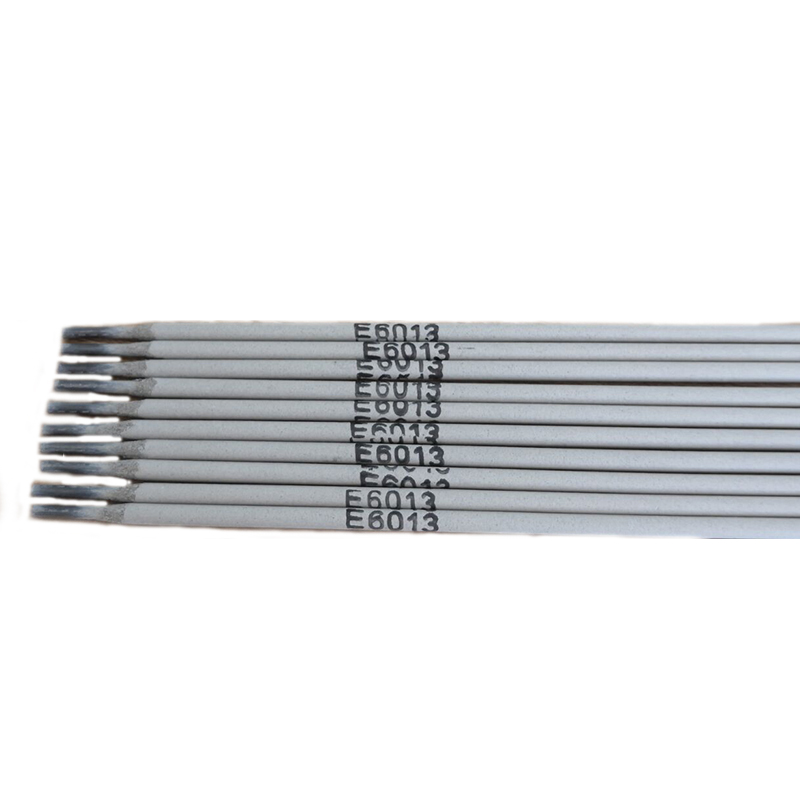 Nosso AWS E6013 é um tipo de eletrodo de soldagem de aço carbono, é adequado para trabalhar em todas as posições com excelentes propriedades tecnológicas de soldagem.
Nosso AWS E6013 é um tipo de eletrodo de soldagem de aço carbono, é adequado para trabalhar em todas as posições com excelentes propriedades tecnológicas de soldagem. -
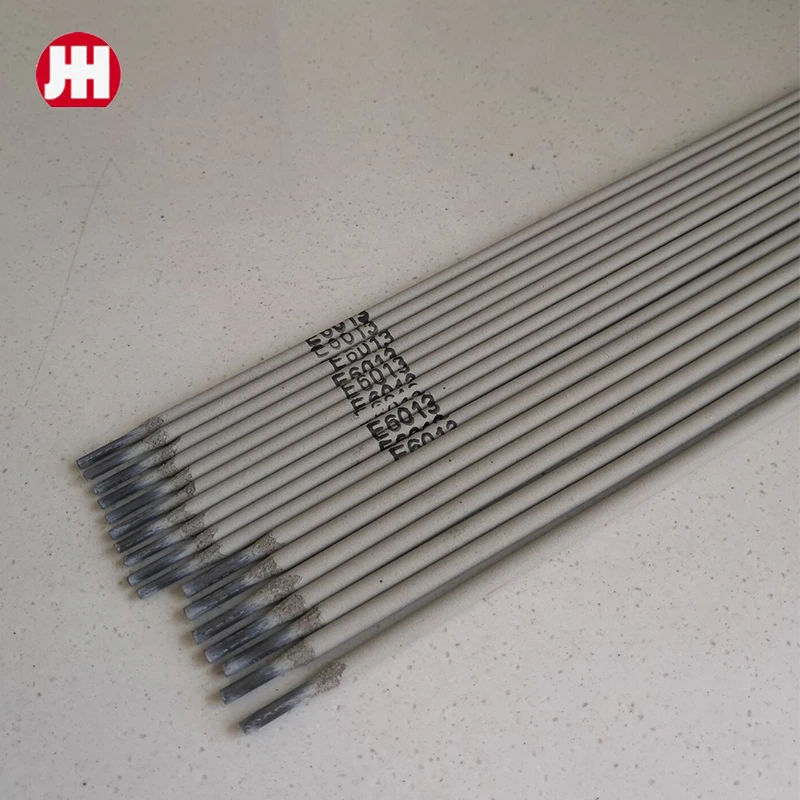 Padrão: AWS E6013/GB E4303 Rutilo e6013 é o grau de eletrodo de alta qualidade, que se refere ao eletrodo de aço estrutural. Possui um revestimento ácido, incluindo revestimento de potássio com alto teor de titânio, e seu diâmetro é geralmente de 3,0 a 5,0 mm.
Padrão: AWS E6013/GB E4303 Rutilo e6013 é o grau de eletrodo de alta qualidade, que se refere ao eletrodo de aço estrutural. Possui um revestimento ácido, incluindo revestimento de potássio com alto teor de titânio, e seu diâmetro é geralmente de 3,0 a 5,0 mm. -
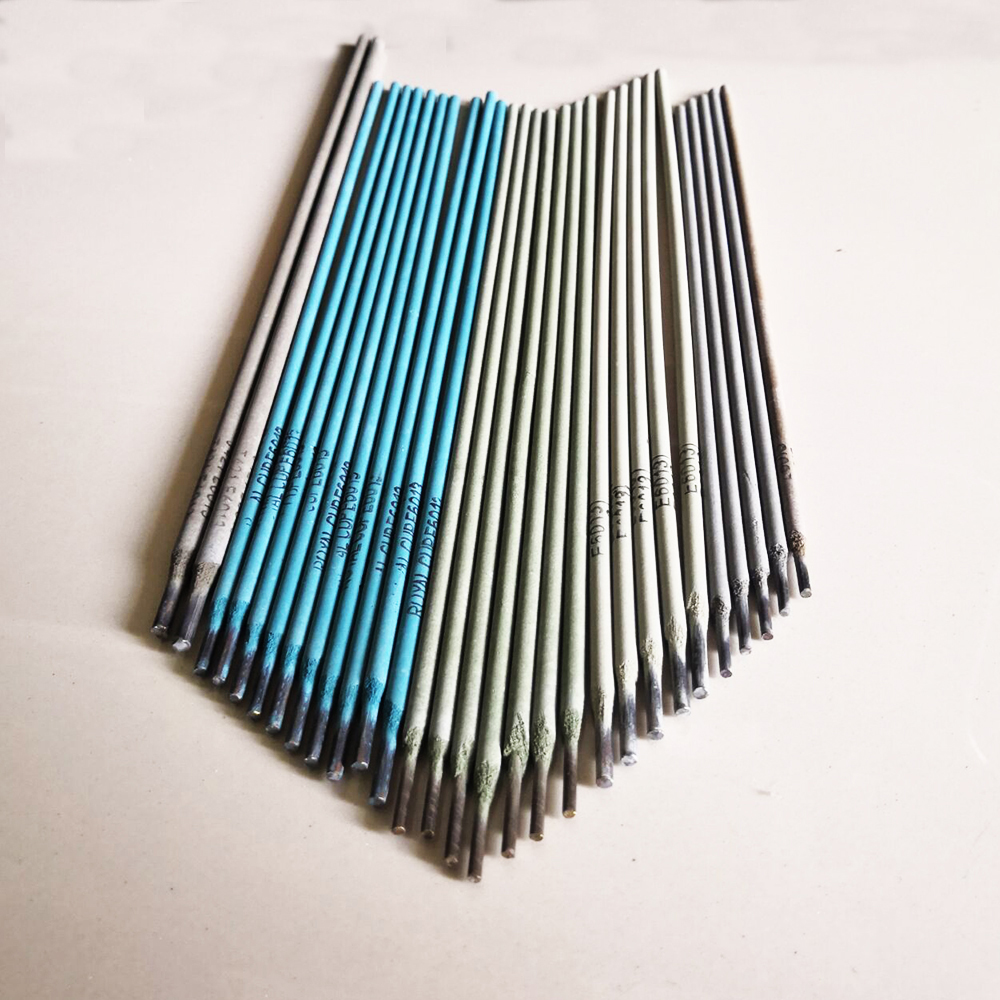 O diâmetro do eletrodo de soldagem não inclui o diâmetro do revestimento. O eletrodo de soldagem de 2,0 mm refere-se ao diâmetro do núcleo de ferro do eletrodo é de 2,0 mm. Não há um padrão fixo para a espessura das varetas de solda com um diâmetro de 2,0 mm.
O diâmetro do eletrodo de soldagem não inclui o diâmetro do revestimento. O eletrodo de soldagem de 2,0 mm refere-se ao diâmetro do núcleo de ferro do eletrodo é de 2,0 mm. Não há um padrão fixo para a espessura das varetas de solda com um diâmetro de 2,0 mm. -
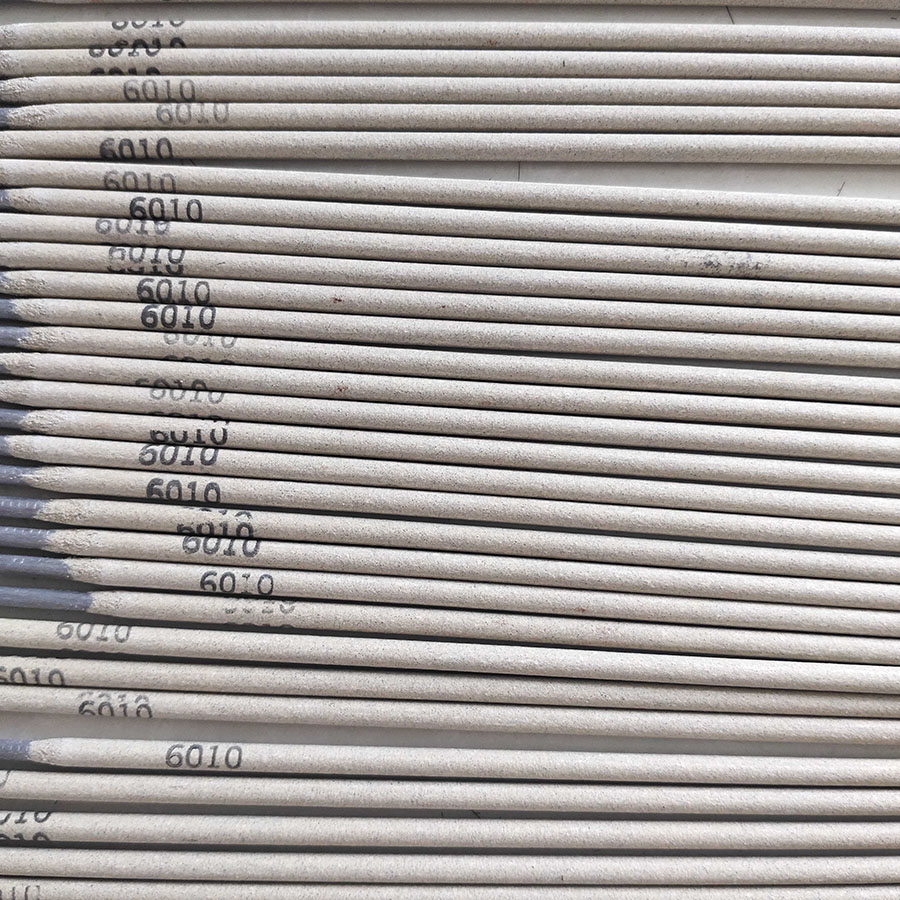 Haste de solda de tubulação E6010 haste de solda de celulose Descrição: E6010 é um eletrodo revestido de sódio de alta celulose para corrente contínua.
Haste de solda de tubulação E6010 haste de solda de celulose Descrição: E6010 é um eletrodo revestido de sódio de alta celulose para corrente contínua. -
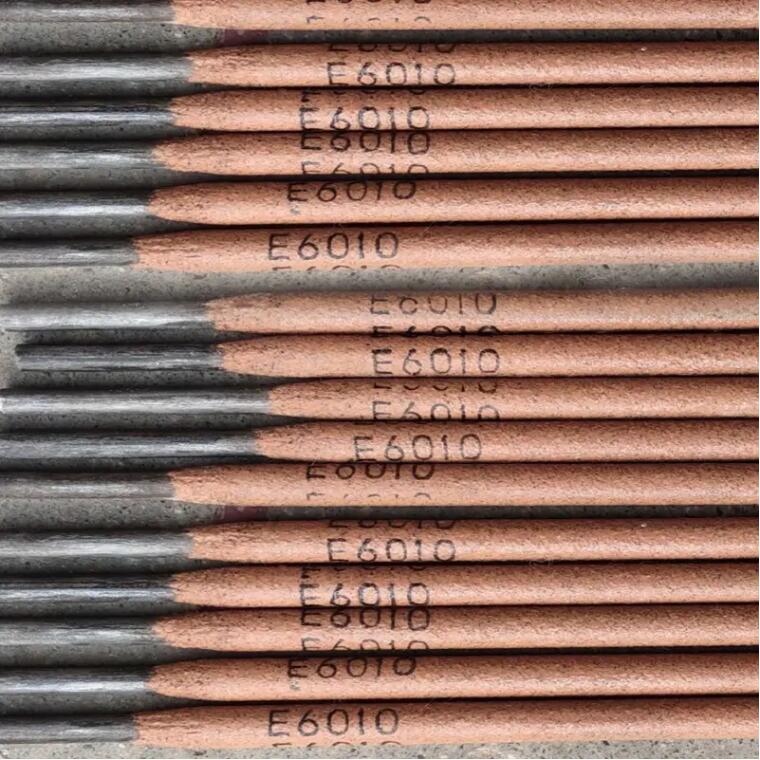 E6010 é um eletrodo descendente vertical coberto de alto teor de sódio de celulose.
E6010 é um eletrodo descendente vertical coberto de alto teor de sódio de celulose. -
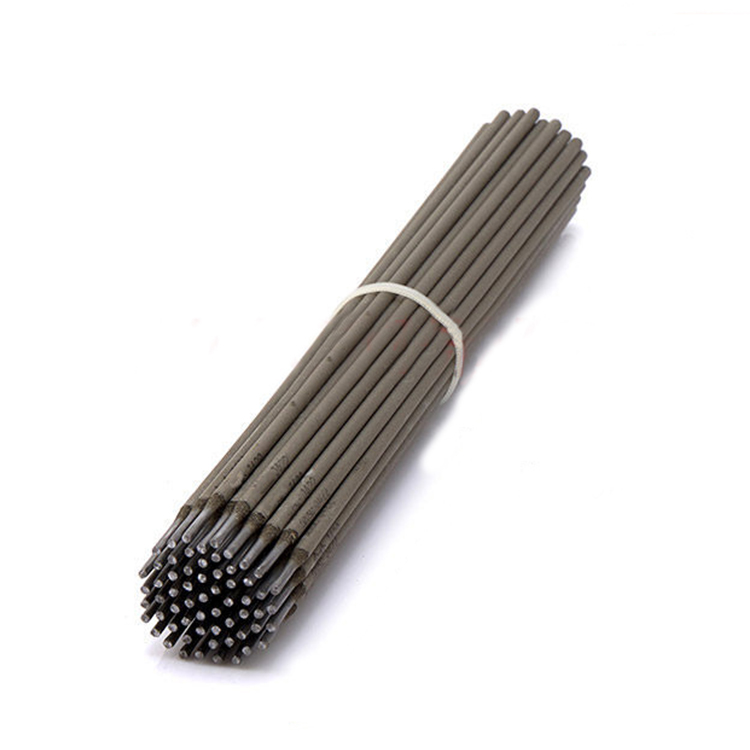 Modelo: AWS E6010 Nossa produção de eletrodos de soldagem de fábrica E6010 é superior a 80.000 toneladas métricas, AWS E6010 é adequado para soldagem de topo,
Modelo: AWS E6010 Nossa produção de eletrodos de soldagem de fábrica E6010 é superior a 80.000 toneladas métricas, AWS E6010 é adequado para soldagem de topo, -
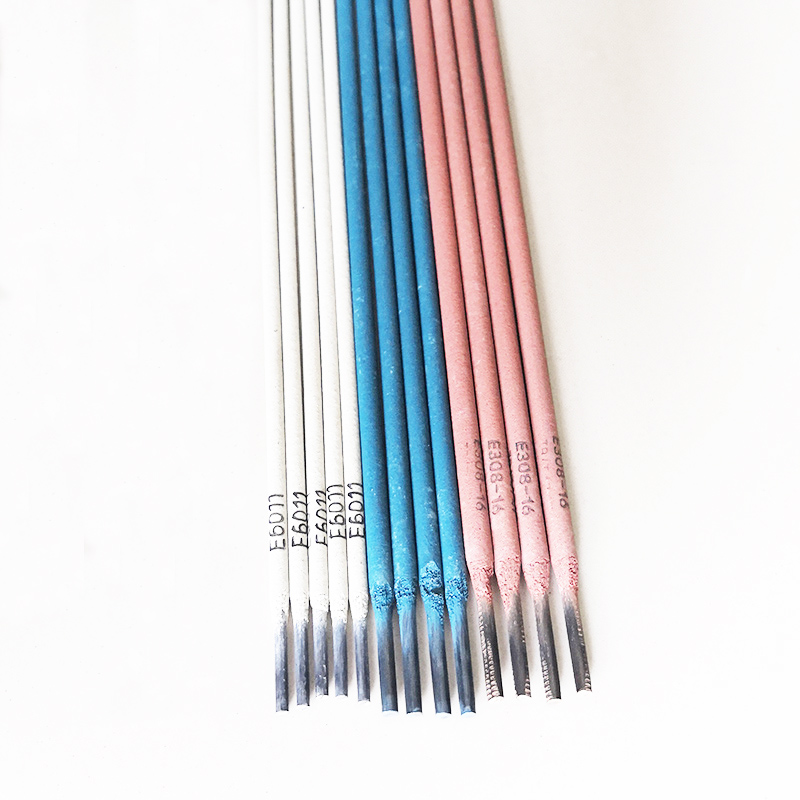 Tipo: AWS E6010 AWS E6010 é um eletrodo de solda de aço carbono tipo sódio de alta celulose para soldagem vertical descendente.
Tipo: AWS E6010 AWS E6010 é um eletrodo de solda de aço carbono tipo sódio de alta celulose para soldagem vertical descendente. -
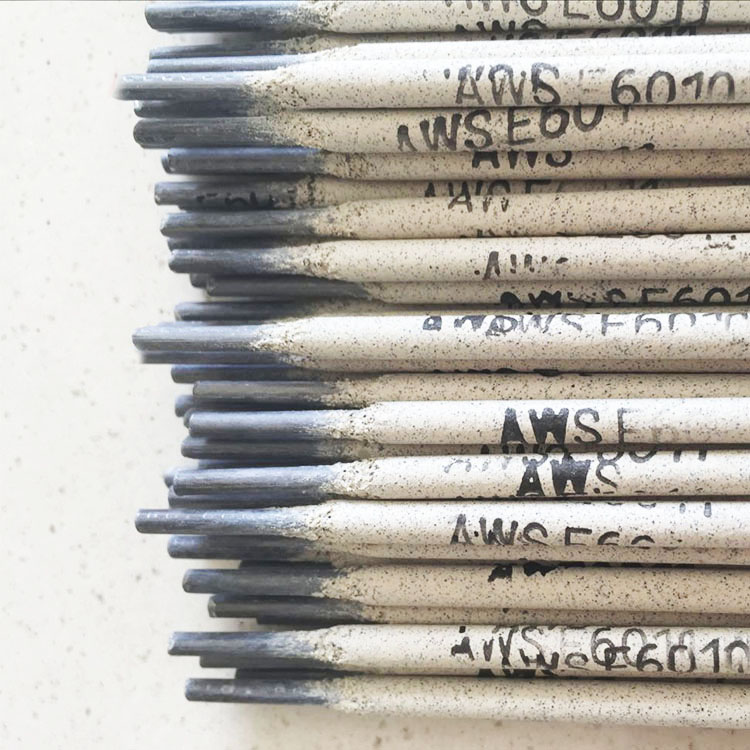 E6010 Welding electrode belongs to PM PRO-60. This electrode is specially designed for the pipeline industry.
E6010 Welding electrode belongs to PM PRO-60. This electrode is specially designed for the pipeline industry. -
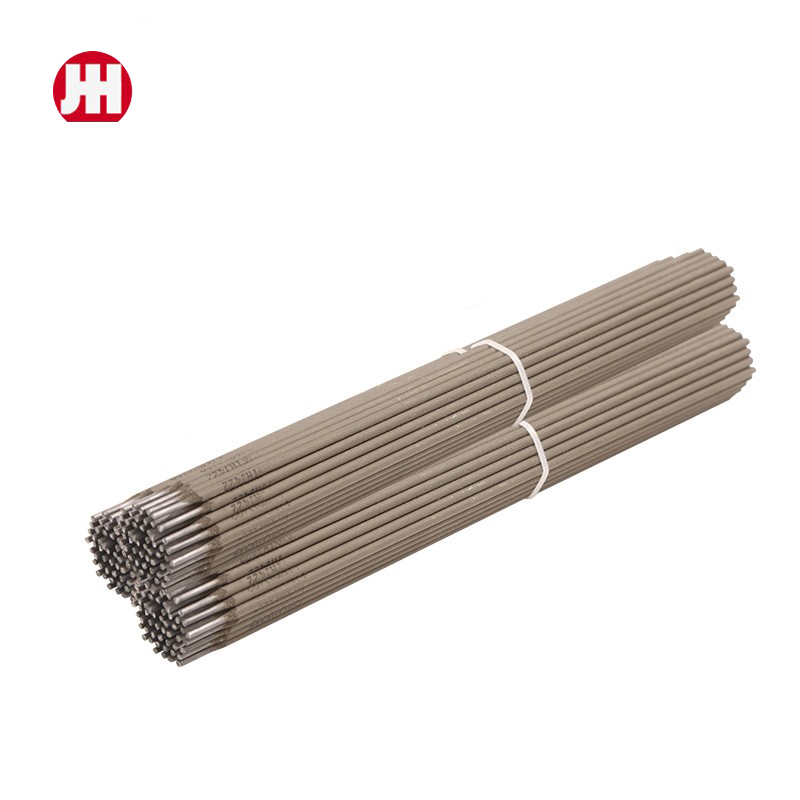 Eletrodos de soldagem E6011 é um eletrodo do tipo rutilo-celulósico de potássio.
Eletrodos de soldagem E6011 é um eletrodo do tipo rutilo-celulósico de potássio. -
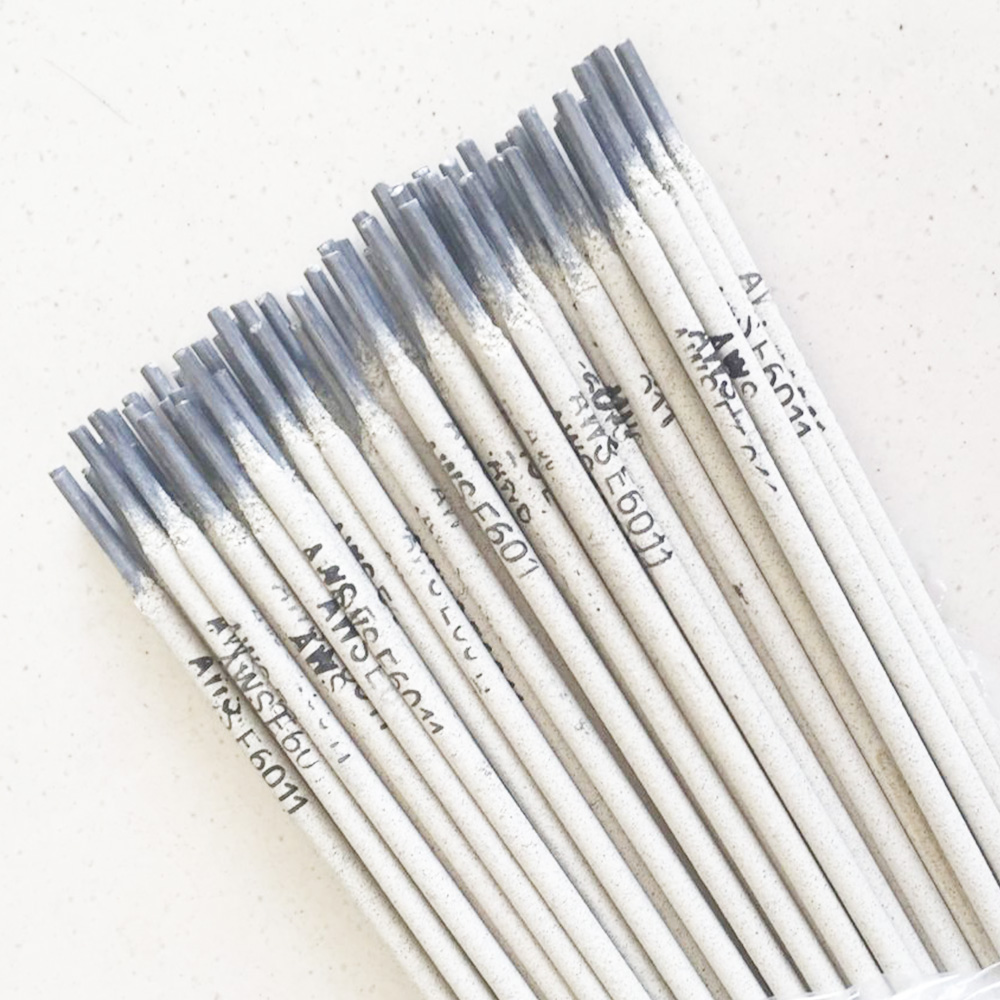 Eletrodo especial vertical descendente tipo celulose GB/T 5117 E4311 AWS A5.1 E6011 ISO 2560-B-E4311 A
Eletrodo especial vertical descendente tipo celulose GB/T 5117 E4311 AWS A5.1 E6011 ISO 2560-B-E4311 A
Welding Electrode Definition
A welding electrode is a metal wire that is coated with flux and is used to conduct current during the welding process. The electrode serves two primary purposes: to provide filler material for the weld and to generate the electric arc needed to fuse metals together. During welding, the electrode melts and deposits material into the weld joint, forming a strong bond between the workpieces. The flux coating helps to stabilize the arc, protect the molten weld pool from atmospheric contamination, and improve the quality of the weld. Welding electrodes come in various types and sizes, each suited for different materials and welding conditions.
Different Types of Welding Rods
Welding rods, also known as welding electrodes, come in various types to suit different welding processes and materials. Here are some of the most common types:
Stick Electrodes (SMAW - Shielded Metal Arc Welding):
E6010 welding rods: Deep penetration, suitable for dirty or rusty surfaces, commonly used for pipelines.
E6011 welding rods: Similar to E6010 but with AC compatibility, used for welding in various positions.
E6013 welding rods: General-purpose electrode with a smooth arc and good appearance, suitable for sheet metal.
E7018 welding rods: Low-hydrogen electrode, excellent for high-strength welds, commonly used in structural welding.
TIG Electrodes (GTAW - Gas Tungsten Arc Welding):
Thoriated (Red): Good for welding steel and stainless steel, offers a stable arc.
Ceriated (Orange): Suitable for low-current applications, good for precision welding.
Lanthanated (Gold): Versatile, used for both AC and DC welding, suitable for aluminum and steel.
Pure Tungsten (Green): Primarily used for aluminum welding with AC, offers a clean arc.
MIG Wires (GMAW - Gas Metal Arc Welding):
ER70S-6: General-purpose wire, good for welding clean or slightly rusty materials, offers good penetration.
ER4043: Aluminum welding wire, used for welding 6XXX series aluminum alloys.
ER316L: Stainless steel wire, used for welding 316 and 316L stainless steel.
Flux-Cored Wires (FCAW - Flux-Cored Arc Welding):
E71T-1: General-purpose flux-cored wire, good for welding carbon steel, offers good mechanical properties.
E71T-8: Self-shielded flux-cored wire, suitable for outdoor welding without shielding gas, good for structural welding.
E309LT: Used for welding dissimilar metals, such as stainless steel to mild steel.
Submerged Arc Welding Wires (SAW):
EM12K: Commonly used for welding carbon steel, offers deep penetration and high deposition rates.
EA2: Suitable for welding low-alloy steels, used in applications requiring high strength and toughness.
Use of Welding Rod
The use of welding rods spans across a vast array of industries, from construction and automotive to aerospace and beyond. But what exactly makes these slender sticks of metal such invaluable assets in the welding arsenal? It all boils down to their unique composition and the myriad ways in which they can be utilized.
At its core, the welding rod serves as the consumable electrode in the welding process, providing the filler material that joins metals together. From shielded metal arc welding (SMAW) to gas tungsten arc welding (GTAW), each welding technique harnesses the power of welding rods in distinct ways to achieve optimal results.
In the realm of construction, welding rods play a pivotal role in joining structural steel beams, reinforcing concrete structures, and fabricating various components essential for erecting buildings and infrastructure. Their ability to withstand high temperatures and generate strong, durable bonds makes them indispensable for ensuring the structural integrity of architectural marvels.
In the automotive industry, welding rods are instrumental in the assembly of vehicle frames, exhaust systems, and body panels, contributing to the safety, performance, and aesthetics of automobiles. Whether it's creating seamless welds on a chassis or repairing a damaged muffler, the precision and reliability of welding rods are paramount in maintaining the quality of automotive craftsmanship.
Moreover, the aerospace sector relies heavily on welding rods for constructing aircraft components with utmost precision and integrity. From fuselage sections to engine mounts, these critical aerospace structures demand the expertise of skilled welders wielding top-tier welding rods to ensure the safety and reliability of airborne vehicles.
The use of welding rods transcends boundaries and industries, showcasing their unparalleled versatility and indispensability in the world of metalworking. Whether you're a seasoned welder or a novice enthusiast, understanding the intricacies of welding rod applications opens up a world of possibilities for unleashing your creative prowess in the realm of fabrication.
So, the next time you pick up a welding rod, remember the immense potential it holds in shaping the very foundation of modern engineering and craftsmanship. Embrace the artistry of welding, and let these unassuming sticks of metal guide you towards new heights of excellence in the world of welding and fabrication.



